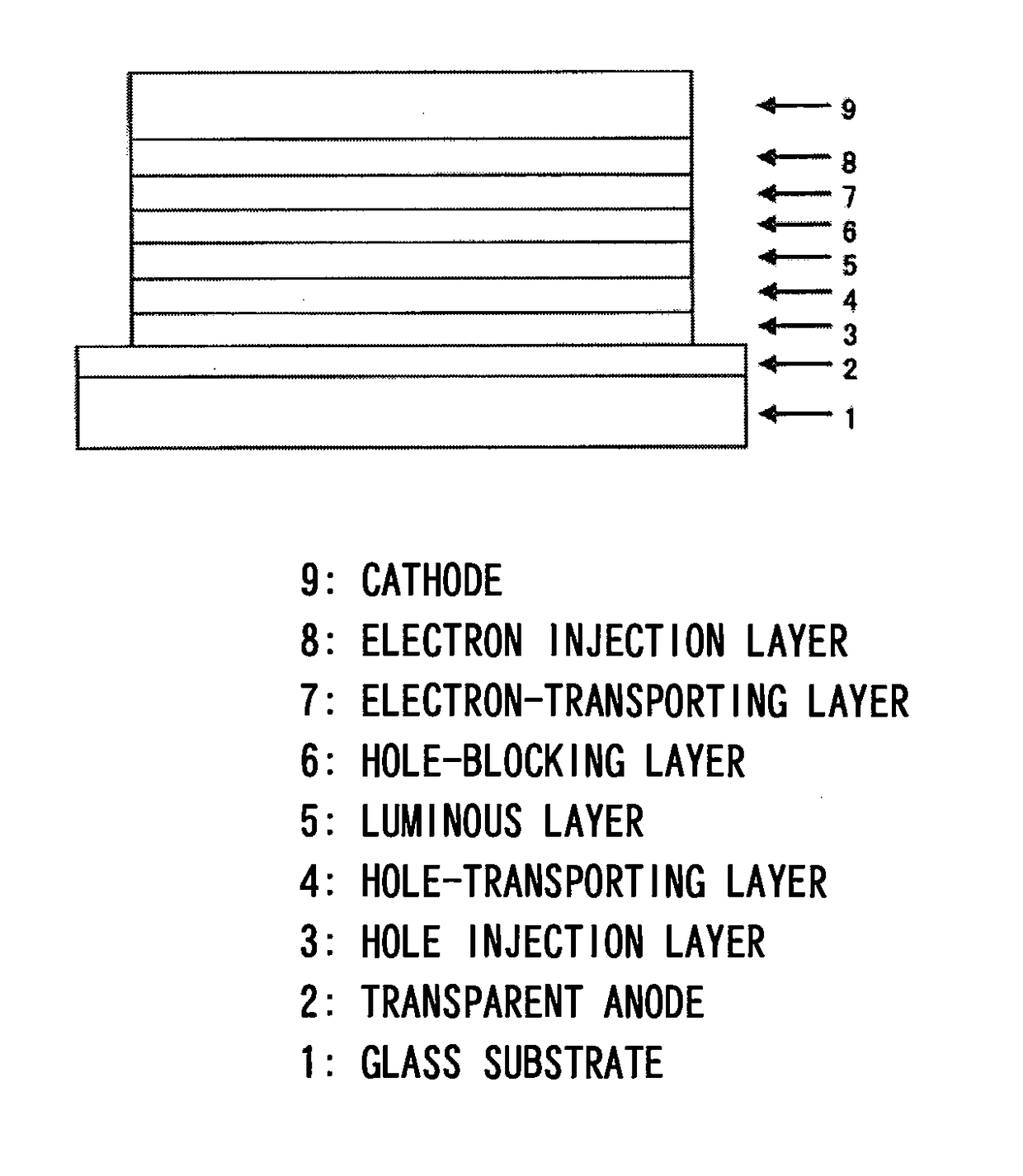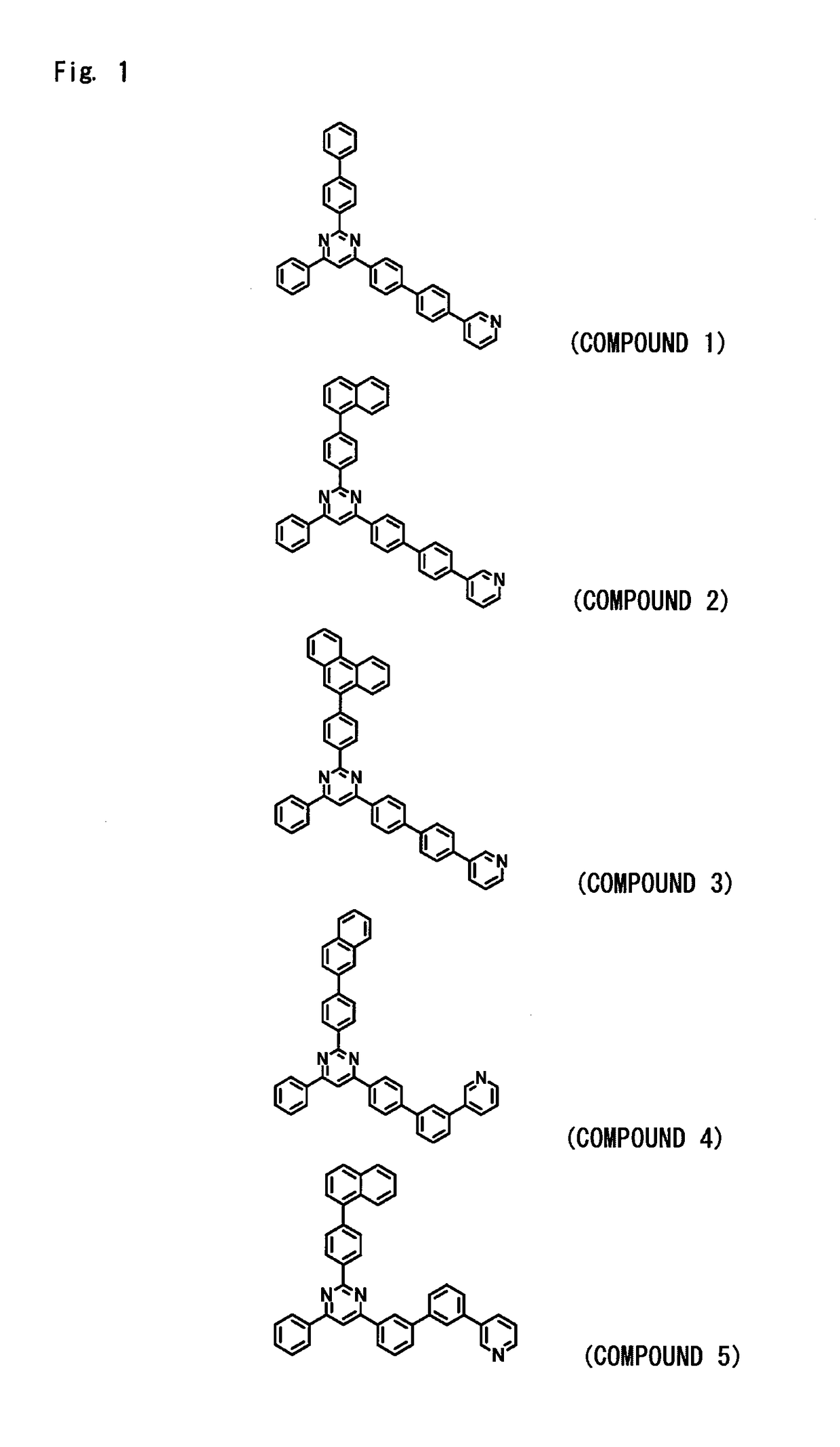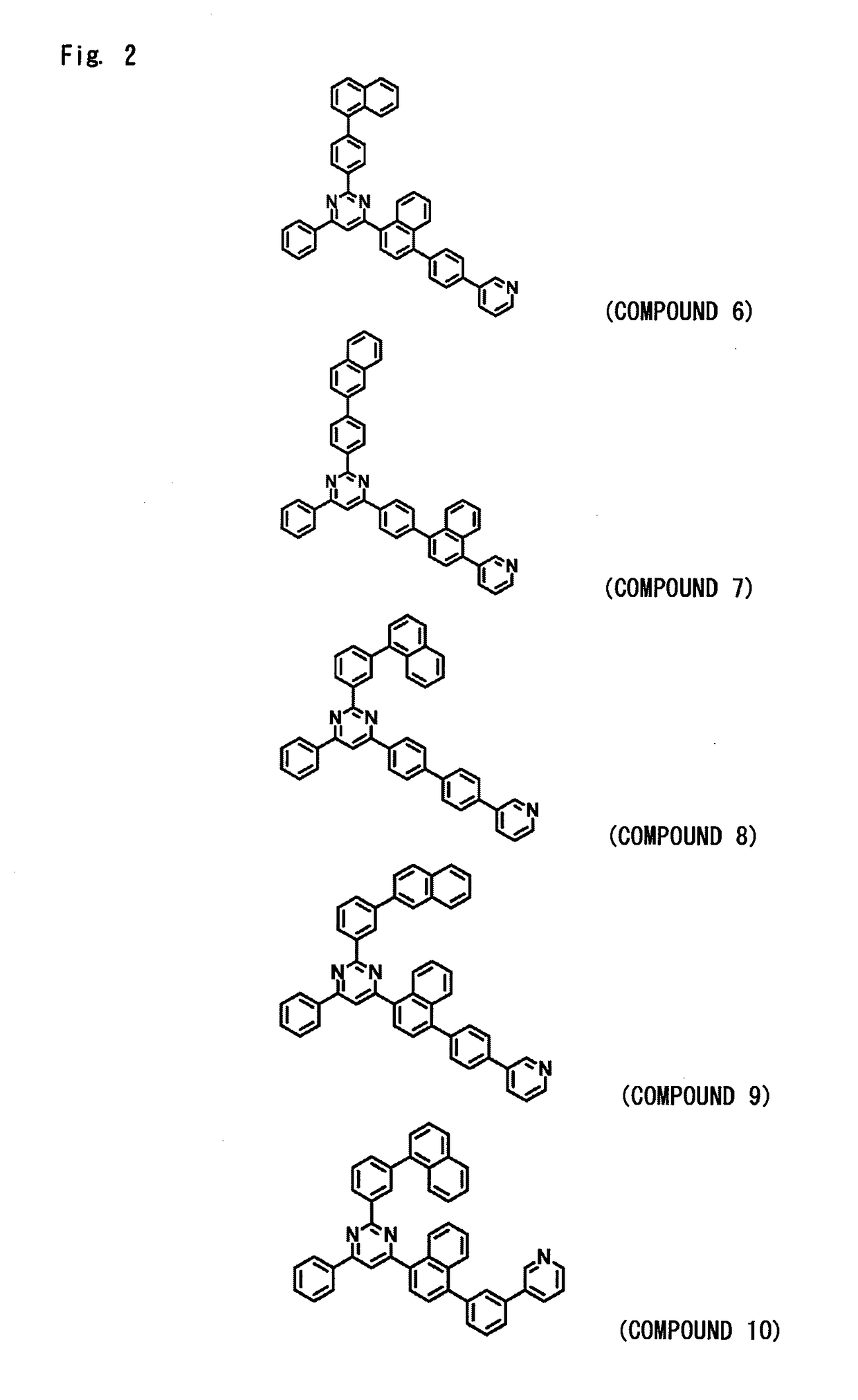Pyrimidine derivative and organic electroluminescent devices
a technology of organic electroluminescent devices and pyrimidine derivatives, which is applied in the direction of luminescent compositions, organic chemistry, chemistry apparatus and processes, etc., can solve the problems of device deterioration, low heat resistance material subject to thermal decomposition, and serious affecting device properties, etc., to achieve excellent hole blocking power, good electron injection property, and high electron mobility
- Summary
- Abstract
- Description
- Claims
- Application Information
AI Technical Summary
Benefits of technology
Problems solved by technology
Method used
Image
Examples
example 2
Device Example 2
[0268]An organic EL device was fabricated under the same conditions as in Device Example 1 but using, as a material for forming the hole blocking layer 6 that also serves as the electron transport layer 7, the compound of Example 2 (compound 2) instead of using the compound of Example 1 (compound 1). The EL device fabricated above was measured for its luminous characteristics when it was impressed with a direct current voltage in the atmosphere at normal temperature. The results were as shown in Table 1.
example 3
Device Example 3
[0269]An organic EL device was fabricated under the same conditions as in Device Example 1 but using, as a material for forming the hole blocking layer 6 that also serves as the electron transport layer 7, the compound of Example 3 (compound 29) instead of using the compound of Example 1 (compound 1). The EL device fabricated above was measured for its luminous characteristics when it was impressed with a direct current voltage in the atmosphere at normal temperature. The results were as shown in Table 1.
example 4
Device Example 4
[0270]An organic EL device was fabricated under the same conditions as in Device Example 1 but using, as a material for forming the hole blocking layer 6 that also serves as the electron transport layer 7, the compound of Example 4 (compound 96) instead of using the compound of Example 1 (compound 1). The EL device fabricated above was measured for its luminous characteristics when it was impressed with a direct current voltage in the atmosphere at normal temperature. The results were as shown in Table 1.
PUM
| Property | Measurement | Unit |
|---|---|---|
| luminance | aaaaa | aaaaa |
| external quantum efficiency | aaaaa | aaaaa |
| work function | aaaaa | aaaaa |
Abstract
Description
Claims
Application Information
 Login to View More
Login to View More - R&D
- Intellectual Property
- Life Sciences
- Materials
- Tech Scout
- Unparalleled Data Quality
- Higher Quality Content
- 60% Fewer Hallucinations
Browse by: Latest US Patents, China's latest patents, Technical Efficacy Thesaurus, Application Domain, Technology Topic, Popular Technical Reports.
© 2025 PatSnap. All rights reserved.Legal|Privacy policy|Modern Slavery Act Transparency Statement|Sitemap|About US| Contact US: help@patsnap.com



